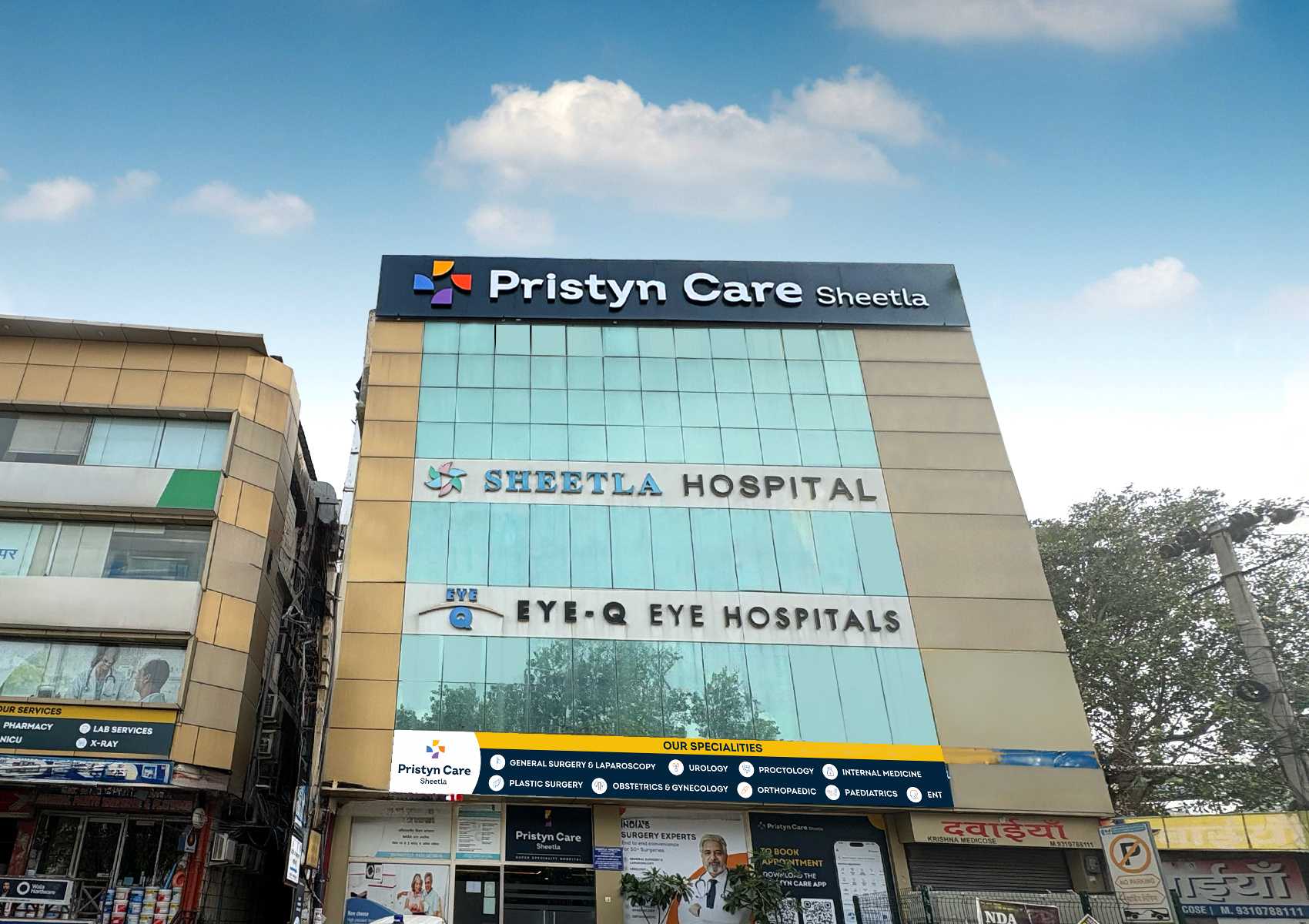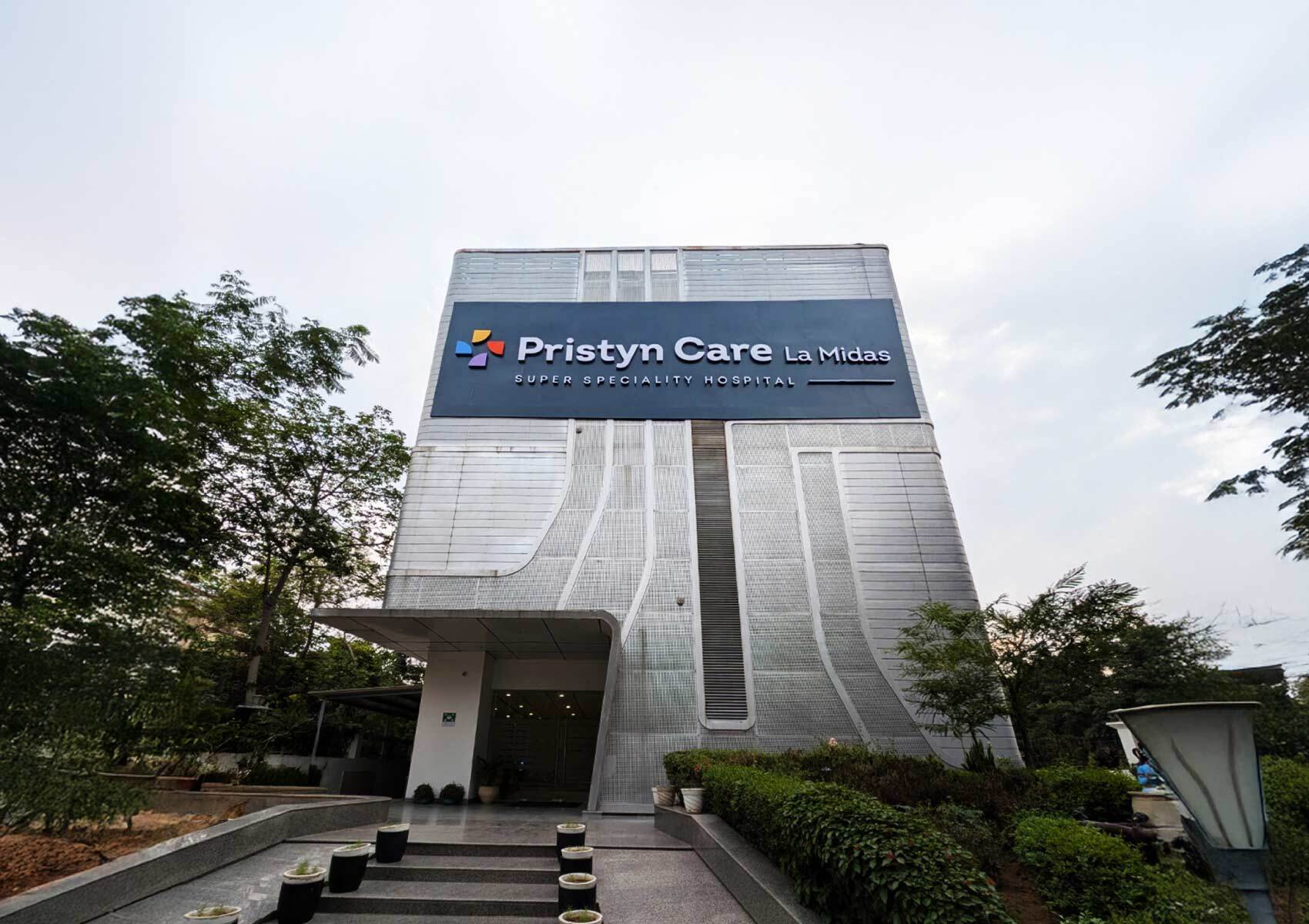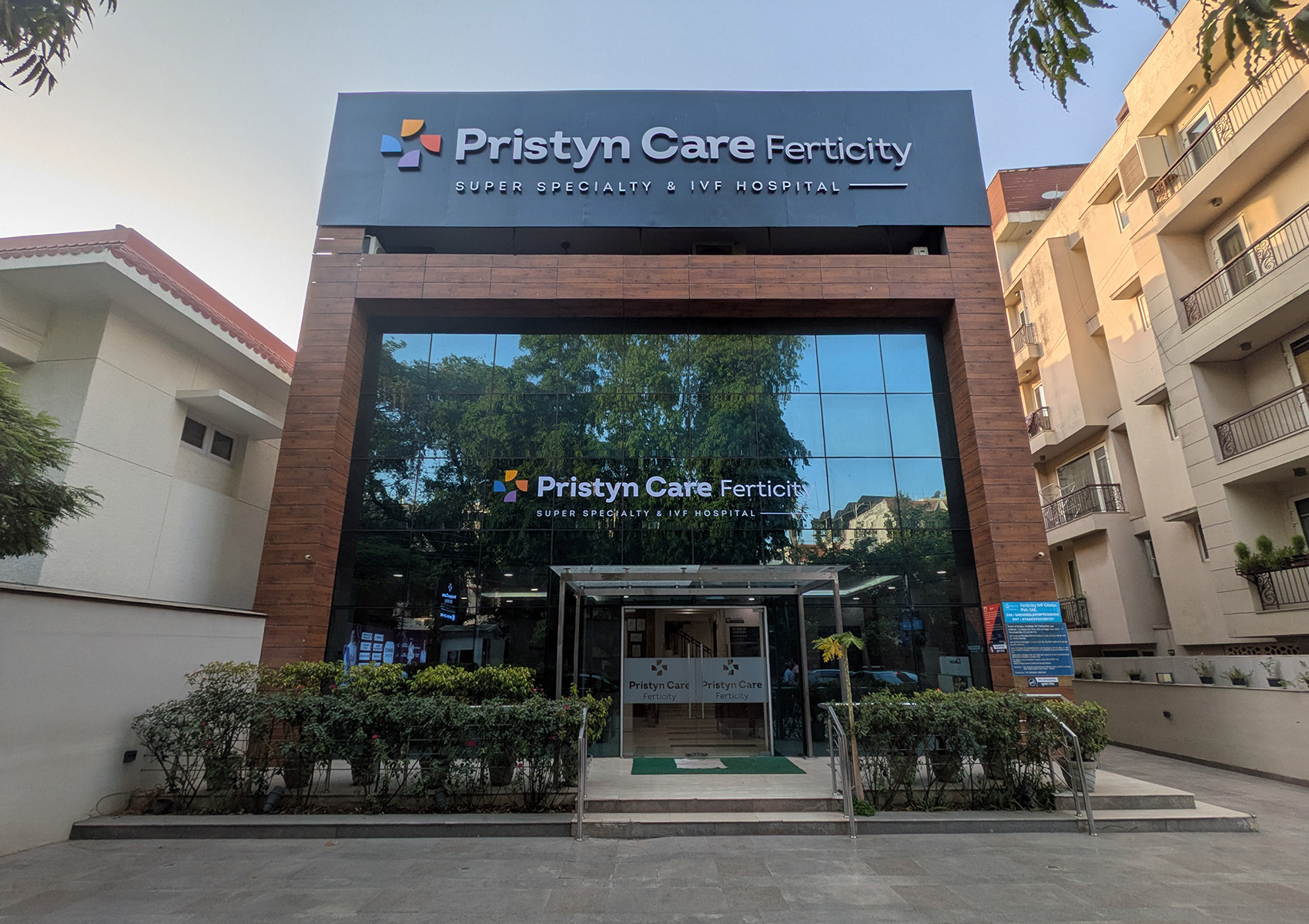
Gurgaon
USFDA Approved Procedures
Minimally invasive. Minimal pain*.
Insurance Paperwork Support
1 Day Procedure




Hysteroscopy procedure is an advanced diagnostic procedure of the cervix and the uterus, which is considered incredibly helpful in assessing the health and functioning of a woman's reproductive system. The exam involves using a hysteroscope, i.e., a slender, flexible, and lighted tube inserted through the vagina for examination. The device has a camera mounted to it, which allows the doctor to visualize the insides of the uterus and cervix. A hysteroscopy is typically performed to:
A hysteroscopy is also sometimes used for surgery. During surgical hysteroscopy, the surgeons pass instruments along with the hysteroscope to perform the surgery. The hysteroscope allows doctors to get a clearer view of the reproductive organs and perform the surgery precisely.
Hysteroscopy is an outpatient procedure performed in a doctor's clinic or hospital. The procedure may or may not require anesthesia. At Pristyn Care, we provide the safest and effective hysteroscopy. Contact our team to schedule an appointment with the best gynecologists in Gurgaon


Hysteroscopy Surgery - Diagnosis and Treatment
For diagnostic purposes, hysteroscopy can be performed in the gynecologist’s clinic by administering local anesthesia. Small polyps can also be removed in this procedure. But, when the hysteroscopy is done in conjunction with a more in-depth surgical procedure, it is done in a hospital under local or general anesthesia.
For diagnostic purposes, hysteroscopy can be performed in the gynecologist’s clinic by administering local anesthesia. Small polyps can also be removed in this procedure. But, when the hysteroscopy is done in conjunction with a more in-depth surgical procedure, it is done in a hospital under local or general anesthesia.
Your doctor will first open the cervix with a device called a speculum. The doctor will then insert the hysteroscope through your vaginal opening and continue inserting it through the cervix and then into your uterus. A liquid or carbon dioxide gas will then be gently passed into your uterus to clear the surface and to help widen it slightly.
The light and camera at the end of the hysteroscope will allow the doctor to see the uterus and fallopian tubes. This allows them to diagnose any issues or to perform any surgical procedures necessary. If the procedure is being done for surgery, the surgical instruments will also be put through the hysteroscope tube to perform the surgery.
However, you may get some cramping during the procedure. Your doctor may give you some sedative to make you relaxed.
_11zon-ca864071060981e9.jpg)
_11zon-ca864071060981e9.jpg)

 NABH
NABH
Pristyn Care Elantis is dedicated to revolutionising surgical care. We combine the latest medical technology with highly skilled professionals and a patient-centric approach to transform the healthcare experience. Our team of doctors at Pristyn Care Elantis, strives to simplify the entire patient journey, ensuring a seamless process from diagnosis through recovery.
We offer specialised treatments across a wide range of medical fields, including proctology, laparoscopic surgery, ENT (ear, nose, and throat), vascular, gynaecology, urology, aesthetics, orthopaedics, ophthalmology, and weight loss solutions.
The Suites & Rooms at Pristyn Care Elantis are designed with your comfort in mind, offering a welcoming ambiance and top-notch amenities to make your stay as pleasant as possible.
Our highly skilled medical team, supported by advanced infrastructure, makes us a trusted choice for comprehensive healthcare solutions.
...Read More



 NABH
NABH
Pristyn Care Sheetla Hospital in Gurgaon makes quality healthcare more accessible and personal. The hospital offers advanced treatment across various specialties like women’s health, child and neonatal care, etc. and minimally invasive surgery. With 36 well-equipped beds, 3 modern operation theatres, and a dedicated ICU, Pristyn Care Sheetla works with comfort and efficiency. With 90+ experienced doctors and a courteous professional medical team, we ensure clear communication, personalized care, and real results – so you feel supported every step of the way.
...Read More
-45a79c8765dfffc7.jpg)
-45a79c8765dfffc7.jpg)

 NABH
NABH
Pristyn Care Diyos Super-Speciality Hospital is committed to redefining modern healthcare by blending cutting-edge technology with compassionate, patient-first care. Located in the heart of Safdarjung Enclave, South Delhi, our NABH-accredited facility offers advanced treatment solutions across multiple specialties, ensuring superior outcomes and faster recoveries.
Our dedicated team of doctors at Pristyn Care Diyos Hospital aims to streamline the entire patient journey—from consultation to recovery—by providing seamless, end-to-end medical care tailored to each individual’s needs.
We offer specialised medical services across a wide range of fields, including urology and andrology, general and laparoscopic surgery, cosmetic and plastic surgery, gynaecology and urogynaecology, orthopaedics, neuro and spine surgery, ENT (ear, nose, and throat), oncology, internal medicine, and critical care. Our facility also extends home care services for enhanced convenience and continuity of care.
The suites and patient rooms at the Hospital are thoughtfully designed to ensure a comfortable and healing environment, featuring modern amenities, hygienic surroundings, and attentive support for both patients and their attendants.
Supported by a skilled clinical team and world-class infrastructure—including modular operation theatres with HEPA filters, advanced diagnostic labs, and high-end medical equipment— Pristyn Care Diyos Hospital stands as a trusted destination for safe, effective, and personalised healthcare.
...Read More



Pristyn Care La Midas is an award-winning, internationally recognised Super Specialty Hospital located in Gurugram, Haryana. We are dedicated to delivering the highest quality aesthetic services, combining advanced medical technology with a compassionate, patient-first approach.
Our state-of-the-art facility offers a comprehensive range of surgical and non-surgical treatments for skin, hair, and body, all at affordable prices. We specialise in services such as laser hair removal, skin rejuvenation, body contouring, and hair restoration, ensuring that each patient receives personalised care tailored to their unique needs.
At Pristyn Care La Midas Hospital, we prioritise patient comfort and satisfaction throughout the treatment journey. Our experienced team of medical professionals is committed to helping you achieve your beauty and wellness goals in the most natural and effective ways possible.
Experience the perfect blend of luxury and innovation at Pristyn Care La Midas Hospital, where your well-being is our top priority.
...Read More



Located in South Delhi, our facility is spacious, serene, and designed to make couples feel comfortable throughout their treatment. We pride ourselves on a warm, clean environment, offering easy access and convenient parking.
With a reputation built on the strength of our experienced clinical team, we specialise in customised treatment protocols and provide comprehensive care, from the initial consultation to treatment completion. Pristyn Care Ferticity Super Specialty & IVF Hospital has helped over 40,000 families worldwide realise their dream of parenthood, maintaining the highest success rates in the field.
Our clinic ensures a partnership between patients, doctors, and staff, delivering compassionate care every step of the way.
...Read More
Delivering Seamless Surgical Experience in India
Your safety is taken care of by thermal screening, social distancing, sanitized clinics and hospital rooms, sterilized surgical equipment and mandatory PPE kits during surgery.
A dedicated Care Coordinator assists you throughout the surgery journey from insurance paperwork, to free commute from home to hospital & back and admission-discharge process at the hospital.
Our surgeons spend a lot of time with you to diagnose your condition. You are assisted in all pre-surgery medical diagnostics. We offer advanced laser and laparoscopic surgical treatment. Our procedures are USFDA approved.
We offer free follow-up consultations and instructions including dietary tips as well as exercises to every patient to ensure they have a smooth recovery to their daily routines.
We have several experienced and highly rated doctors for Hysteroscopy in Gurgaon. Some of our top specialists include: Dr. Sharmila Chhabra (31 Years Experience Overall), Dr. Nidhi Moda (23 Years Experience Overall), Dr. Biplab Mukhopadhyay (20 Years Experience Overall), etc.
The cost of hysteroscopy in Gurgaon can differ for every patient and is calculated based on various factors. Typically, this procedure will cost you anywhere between Rs.30,000 and Rs.40,000. The most common factors impacting the cost include the patient’s choice of hospital (government or private), cost of anesthesia, the reason for hysteroscopy, doctor’s consultation charges, etc. The cost must be discussed with the doctor or the respective healthcare center beforehand.
For hysteroscopy, you must consult with best gynecologists in Gurgaon. Gynecologists specialize in performing this procedure, along with several other procedures to diagnose and treat conditions affecting the female reproductive system. At Pristyn Care, we house the best gynecologists with 10+ years of experience. To consult with our gynecologists, reach out to our team and schedule your appointment today.
Read more: Which doctor to consult for Hysteroscopy surgery?
A Hysteroscopy can be done either in the hospital or at the doctor’s office. You can be awake or under general anesthesia during the procedure. If you are awake the doctor will give you medicine to feel relaxed.
Doctors recommend complete rest after a hysteroscopy. Minimum housework and no heavy lifting is also recommended for two weeks. Our doctors provide a set of do’s and don’ts after the laparoscopic surgery.
Hysteroscopy is a one-day procedure that is usually done in a hospital. Usually, the whole patient is discharged after 1-2 hours after the procedure. The patient can easily return to work the next morning. The patient might suffer mild pain and cramping which is normal after the surgery.
It depends on person to person. After the procedure, you may feel some cramping or also some slight vaginal bleeding for about one or two days.
A hysteroscopy is recommended when a female is suffering from endometriosis, ovarian cysts, abnormal bleeding, etc. There are super-specialty hospitals that provide hysterectomies but these are always fully occupied. Some of the gynecologists don’t spare some time to talk to their patients after the surgery. Pristyn Care prides in providing 24/7 care to all patients, both before and after the surgical procedures. Our gynecologists are not only highly experienced but also always ready to answer any query the patient might have. Get in touch with your nearest Pristyn Care clinic to know more!
| Sr.No. | Doctor Name | Registration Number | Ratings | Experience | Address | Book Appointment |
|---|---|---|---|---|---|---|
| 1 | Dr. Sharmila Chhabra | HN-11455 | 4.5 | 31 + Years | Pristyn care Sheetla Hospital, New Railway Rd, near Dronoacharya Govt College, Manohar Nagar, Sector 8, Gurugram, Haryana 122001 |
Book Appointment |
| 2 | Dr. Nidhi Moda | HN 014672 | 4.9 | 23 + Years | Pristyn Care Sheetla, New Railway Rd, Gurugram |
Book Appointment |
| 3 | Dr. Biplab Mukhopadhyay | 42831 | 5.0 | 20 + Years | Pristyn Care Elantis, Ring Road, Lajpat Nagar |
Book Appointment |
| 4 | Dr. Aastha Agarwal | 38829 | 5.0 | 17 + Years | -- |
Book Appointment |
| 5 | Dr. Mannan Gupta | DMC/R/15420 | 5.0 | 15 + Years | Pristyn Care Elantis, Ring Road, Lajpat Nagar |
Book Appointment |
| 6 | Dr. Priya Shikha Modi | 74049 | 5.0 | 15 + Years | Ashirwad Complex, Main Rd Gijhor, Block F, Sector 53, Noida, Uttar Pradesh 201301 |
Book Appointment |
| 7 | Dr. Suchismita Biswal | 77263 | 4.5 | 14 + Years | E7, Upper First floor, Outer Ring Rd, above RBL bank, Prashant Vihar, Sector 14, Rohini, Delhi, 110085 |
Book Appointment |
| 8 | Dr. Preeti Mehra | DMC/R/7573 | 4.5 | 14 + Years | Plot 10, opposite Ranjit Vihar II, MBR Enclave, PHASE 2, Sector 23, Dwarka, New Delhi, Delhi, 110077 |
Book Appointment |
| 9 | Dr. Vikas Yadav | 56403 | 4.7 | 13 + Years | SHARDA UNIVERSITY Campus, Plot No. 32, 34, Knowledge Park III, Greater Noida, Uttar Pradesh 201306 |
Book Appointment |
| 10 | Dr. B Preethi | HN 22410 | 4.5 | 11 + Years | near Geetanjali school, Block G, Sushant Lok 2, Sector 57, Gurugram, Haryana 122001 |
Book Appointment |
| 11 | Dr. Swati Chhabra | 015060 | 4.5 | 8 + Years | Avanza Healthcare & Diagnostics, HUDA MARKET, C-3, Islampur Colony, Sector 38, Gurugram, Haryana 122015 |
Book Appointment |
.svg)
.svg)